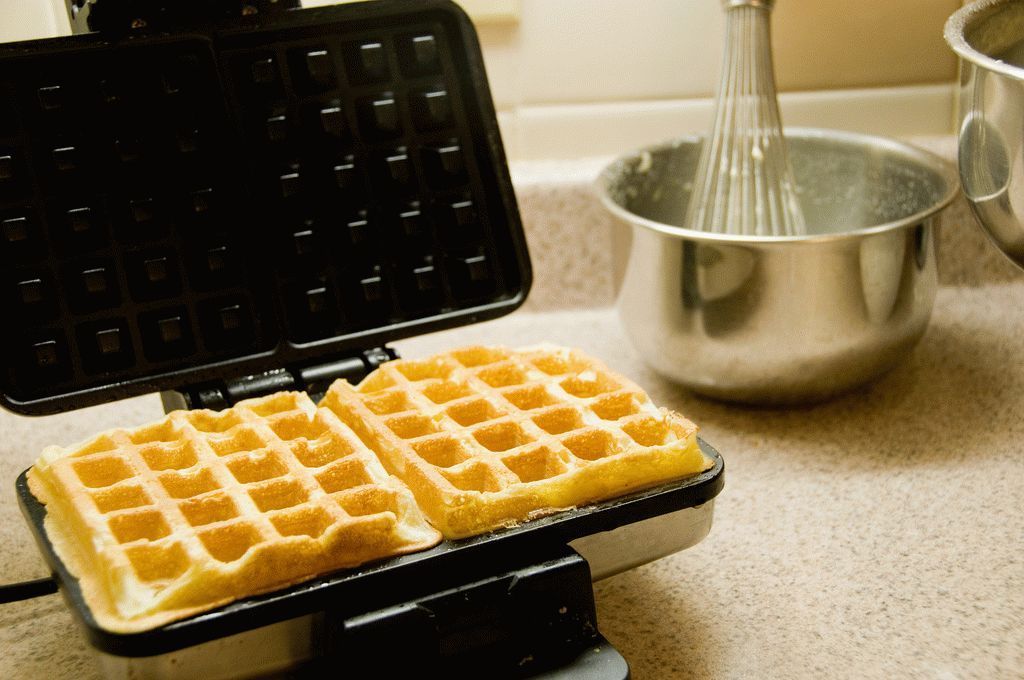Ranking of the best fuel tanks for 2020

To store the fuel supplied to the engine of any movable equipment, a special reservoir is designed, called a fuel tank, which is an integral part of the fuel system. It is made in the form of a sealed container and, depending on the model of movable equipment, can be different in shape, material of manufacture and volume. By and large, such tanks are designed for liquid fuels - diesel, gasoline or liquefied gas.
Vehicle fuel system
The nuances of placing the tank in the car
Fuel tanks with optimal design are installed on each category of cars. For example, in passenger cars, the tank is usually located at the rear in front of the rear axle and under the seat. This is done in order to ensure that in the event of an accident, this area is most protected.
For trucks, fuel tanks (often even a few) are placed between the rear and front axles from the side of the frame. This is due to the fact that this type of vehicle often gets into head-on accidents. If the car has been modernized, then its fuel tank can be placed in an arbitrary place, however, in most cases, such "tuning" can threaten the car owner with a fine.
Due to the fact that the fuel tank is located next to the exhaust system, special thermal insulation screens are used to prevent heating.
Types of fuel tanks and materials from which they are made
The main requirement for fuel tanks is their increased tightness, which prevents fuel leakage (or ingress of its vapors). In general, this should ensure overall safe operation and save fuel consumption.
The following types of materials are used in the production of fuel tanks:
- Steel - mainly used in gas systems and installed in trucks.
- Aluminum - used in cars that use gasoline fuel.
- Plastic is the most popular material as it is suitable for all fuels.
Automotive standards recommend using a tank volume that would allow a minimum of 400 km to be driven without refueling. The downside of this issue is that too large a tank increases the cost of the car and complicates its design. The total volume of the fuel tank can be divided into real (filling "under the neck") and nominal (it is indicated in the instructions for the car). The actual capacity of the fuel tank, depending on the car, can be more than the nominal in the region of 2-17 liters. The average volume of a passenger car gas tank is 50-70 liters. However, there are special powerful models with a volume of 80 liters or more, and small-displacement versions are equipped with 30-liter tanks. Trucks can have a total gas tank volume of 170-500 liters.
Modern forms of fuel tanks
There is no single design and shape of the gas tank. In order to achieve their maximum volumes and without compromising their compactness, they can be given a complicated geometry, and this, in turn, can depend on the model of the machine and its configuration.
In steel containers, a complex shape can be achieved by stamping sheet metal and by means of sealed welded joints. Plastic tanks are molded using high pressure and temperature.
The main elements of the gas tank
Despite the difference in shape, structurally, most gas tanks have common elements:
- Filler neck - it comes out to the surface of the body and is needed for filling with fuel. Usually located on the driver's side (next to the rear fender). On most cars, this filler neck has a special screw-threaded sealed cap that prevents fuel from leaking out. One way or another, some modern car models do without this cover. It is replaced by the Easy Fuel system, which is a small hatch equipped with an electric drive that closes / opens the gas tank.
- Walled body, i.e. directly the tank.
- Fuel fluid intake pipe - it has a special filter that prevents impurities from entering the container. On existing passenger cars, this function is assigned to the submersible fuel pump module. It can be additionally equipped with a mobile filter (mesh).
- Drain hole (fixed position with plug closed) - This is used when an urgent need to drain gasoline.
- Fuel level sensor with float - required to control the amount of fuel.
- Ventilation tube.

How the ventilation system works
When considering the design and construction of the fuel tank, special attention should be paid to the ventilation system. Thanks to her, it is possible to simultaneously solve several important tasks:
- Elimination of air surpluses that get inside when refueling.
- Maintaining proper atmospheric pressure inside the tank - this requirement is the key to the normal functioning of the fuel system. Due to the fact that the container is as tight as possible, a vacuum arises during the development of fuel, which can cause deformation and rupture of the housing.
- Ensuring a safe temperature and proper cooling of the tank.
Cars usually have closed ventilation systems. This design is not equipped with a direct outlet from the fuel tank to the atmosphere, but has a number of devices used to extract vapors and air intake. Air is drawn in through the fuel tank ventilation check valve. At the moment when the vacuum builds up, under the influence of internal pressure, the valve spring is squeezed out and starts the air inside. This function is repeated until normal atmospheric pressure is established.
In order to remove fuel vapors from the tank, a steam line is provided in the design, through which the vapors enter the adsorber. There they turn into condensation and accumulate. At the moment when the adsorber fills up, the blowdown system starts to work, which supplies the condensed liquid to the inlet manifold for working off.
The service life of a gas tank by and large depends on the conditions of its use and the quality of fuel. Like any element of a car, it requires proper maintenance. First of all, this includes rinsing the tank and cleaning it from contamination. During flushing, it is not necessary to use special cleaning additives, since they can adversely affect the main parts of the fuel system, and in exceptional cases can lead to depressurization and destruction of the housing itself.
Motor boat fuel systems
Gasoline tanks have different parameters. In order to correctly choose the optimal capacity, all technical characteristics of the watercraft should be taken into account.
Various types of fuel tanks for motor boats
In terms of design characteristics, they are divided into:
- Built-in - these are non-removable options used for motors with a capacity of no more than 6 l / s. Such models are placed on small boats and hidden under a cover that covers the engine.
- Portable - are a removable type of tank. Such designs are ideal for small boats and inflatable boats. They are popular with tourists and long-distance fishermen.
- Stationary - installed with powerful motors, have increased capacity and are used on large boats or yachts.
Boat fuel tanks are also classified as either hard or soft. The latter are made from elastic and sealed materials. During filling, they increase, and after the end of gasoline, they decrease. Soft models are preferable because they do not accumulate flammable vapors, and their small dimensions allow them to be placed in a place where a hard container does not fit. Their main drawback is the overpriced price tag.
By its shape, the fuel tank for a boat is in the form of a canister or a rectangle - here the choice depends on the taste of the potential user. According to the material of manufacture, they are divided into:
- Metallic.
- Plastic.
- Tissue.
All materials are suitable for gasoline. Soft models are made from multi-layer polymer-based fabrics that demonstrate excellent chemical resistance.
Features of the choice of a boat tank
Its volume directly depends on the motor power. It often happens that even a small fuel capacity can initially satisfy the consumer. However, the further a tourist-angler begins his planned trips, the higher the likelihood that he will definitely need an increase in its volume.
This issue can be solved in various ways, for example, by mounting an additional container or by taking a supply of fuel in cans. However, carrying them with you is a dubious pleasure, so a spare gas tank seems to be the best solution.
When choosing a tank for gasoline, you need to pay attention to:
- Completeness - the set must include all elements that are declared by the manufacturer in the description.
- Quality - there should be no deformation or damage on the container. The structure must be sealed, robust and chemically resistant to gasoline. It should also be slightly affected by temperature changes, sun and water.
- The presence of compartments for accumulating condensate - they are located at the bottom of the tank and prevent moisture from entering the gas line.
The analysis of the boat tank market showed that plastic and fabric options are more popular, even despite their overpriced.
Fuel systems for motor vehicles
The fuel supply system plays a very important role in the operation of motor vehicles, since it supplies gasoline to the carburetor, and then to the motorcycle's combustion chamber. Hence, it is clear that you need to carefully monitor the technical condition of the fuel system, because even the smallest leakage or contamination can lead to engine breakdowns, and this will require long and expensive repairs.
Fuel filter
A large number of modern mopeds and scooters are equipped with fuel filters. Their main task is to clean the fuel from sediments, rust, shavings, and other small foreign fragments before the fuel enters the carburetor. The fuel filter is usually located between the carburetor and the gas tank. In the case when a gas pump is also present in the model, the filter is located between the pump and the gas tank.
Manufacturers often save money and do not install filters in their products. In this case, their absence can significantly affect the operational life of the product.
Gasoline tank and fuel line
Special attention should be paid to these elements of motor vehicles. There should be no smudges or oily stains on or around the tank. If they are present, then the fuel tank itself may leak, or the fuel line is damaged. In the best case, in such a situation, it is advisable to replace the damaged element, and in the worst case, tighten the clamps at the joints or repair the fuel tank. You should always remember that the serviceability of these parts of motor vehicles is a guarantee of the safety of the rider himself.
Ranking of the best fuel tanks for 2020
For cars
2nd place: Fuel tank KamAZ 5511-1101010-10SB
This is a standard and well-proven option. It is equipped with a semi-turn lid that resists leakage as much as possible. This model is perfect for most domestic trucks. Although it will require professional editing, this operation will not cause significant problems.

| Name | Index |
|---|---|
| Manufacturer country | Russia |
| Capacity, l | 170 |
| Material | Stainless steel |
| Additional options | Semi-turn cover |
| Price, rubles | 6500 |
- adequate price;
- versatility;
- large capacity.
- relatively short service life.
1st place: Fuel tank ATG-30
This is a good model for small cars. Due to its compactness, it can be placed in any part of the car. The tank body is made of stainless steel and has a herringbone lid. The connecting seams are protected with rubber pads.

| Name | Index |
|---|---|
| Manufacturer country | Taiwan |
| Capacity, l | 30 |
| Material | Stainless steel |
| Additional options | Fuel level sensor, union |
| Price, rubles | 2800 |
- compactness;
- good equipment;
- durable body.
- small capacity.
For water transport
2nd place: Soft fuel tank MPTB-25
This container can be used not only as a source of fuel supply, but also as a storage tank and transportation of fuel. The model consists of an internal polymer sealed container. Additional straps are provided for fastening. The flow connections are equipped with ball valves.

| Name | Index |
|---|---|
| Manufacturer country | Russia |
| Capacity, l | Up to 100 |
| Material | Polymer fabric |
| Additional options | Threaded caps, ball valves |
| Price, rubles | 3800 |
- mobility;
- compactness;
- nice extras.
- not identified.
1st place: Fuel tank of the outboard motor Veterok
This is a fairly common option used on small-sized vessels of only Russian production. It has a sturdy body and is resistant to mechanical damage. The tank is easy to install and can be used as a reserve tank.

| Name | Index |
|---|---|
| Manufacturer country | Russia |
| Capacity, l | 30 |
| Material | Stainless steel |
| Additional options | absent |
| Price, rubles | 4700 |
- durable body;
- mobility;
- popular Russian brand.
- not detected.
For motor vehicles
2nd place: GAS TANK FOR MOPED DELTA
This is a great option for most modern mopeds and scooters. Due to its performance from chemically resistant polymers, it has an increased service life. Additionally, it can be equipped with a "siphon".

| Name | Index |
|---|---|
| Manufacturer country | PRC |
| Capacity, l | 15 |
| Material | Polymers |
| Additional options | Easy Fuel System |
| Price, rubles | 1500 |
- affordable price;
- good chem. sustainability;
- versatility.
- relatively small.
1st place: MXR fuel tank type KLX with fuel cock
This is the standard model suitable for most motor vehicles. The plastic design of the housing indicates high chemical resistance.

| Name | Index |
|---|---|
| Manufacturer country | PRC |
| Capacity, l | 20 |
| Material | Polymers |
| Additional options | Additional fuel cock |
| Price, rubles | 1700 |
- multifunctionality;
- the presence of a fuel tap;
- adequate price.
- not detected.
Conclusion
Market analysis has shown that it is not difficult to choose a fuel tank for transport and equipment, but professionals advise purchasing them in retail chains, since in this case there is an opportunity to at least visually detect a possible defect. Buying online is not the best solution. It should always be remembered that the lives of people can depend on the serviceability of the fuel tank.
new entries
Categories
Useful
Popular articles
-

Top rating of the best and inexpensive scooters up to 50 cubic meters in 2020
Views: 97661 -

Rating of the best materials for noise insulation for an apartment in 2020
Views: 95022 -

Rating of cheap analogues of expensive medicines for flu and colds for 2020
Views: 91751 -

The best men's running shoes in 2020
Views: 87681 -

Top ranking of the best smartwatches 2020 - price-quality
Views: 85091 -

Best Complex Vitamins in 2020
Views: 84801 -

The best dye for gray hair - 2020 top ranking
Views: 82406 -

Rating of the best wood paints for interior use in 2020
Views: 77202 -

Ranking of the best action cameras from China in 2020
Views: 75269 -

Rating of the best spinning reels in 2020
Views: 74827 -

The most effective calcium supplements for adults and children in 2020
Views: 72463 -

Top rating of the best means for male potency in 2020 with a description
Views: 68296









